22.2: Population and Climate Changes
- Page ID
- 132600
Are human societies able to continue growing forever, or are there limits to the Earth’s carrying capacity?
One of the most basic but often overlooked aspects of human interactions with the environment is the impact of population growth and resource scarcity. In the past, people haven’t always been too concerned if the success of their particular community came at the expense of their neighbors. But recently that neighborhood has expanded to cover the whole globe. There’s an economic concept called the 'zero sum game', which says that in many situations, for every winner there has to be a loser.
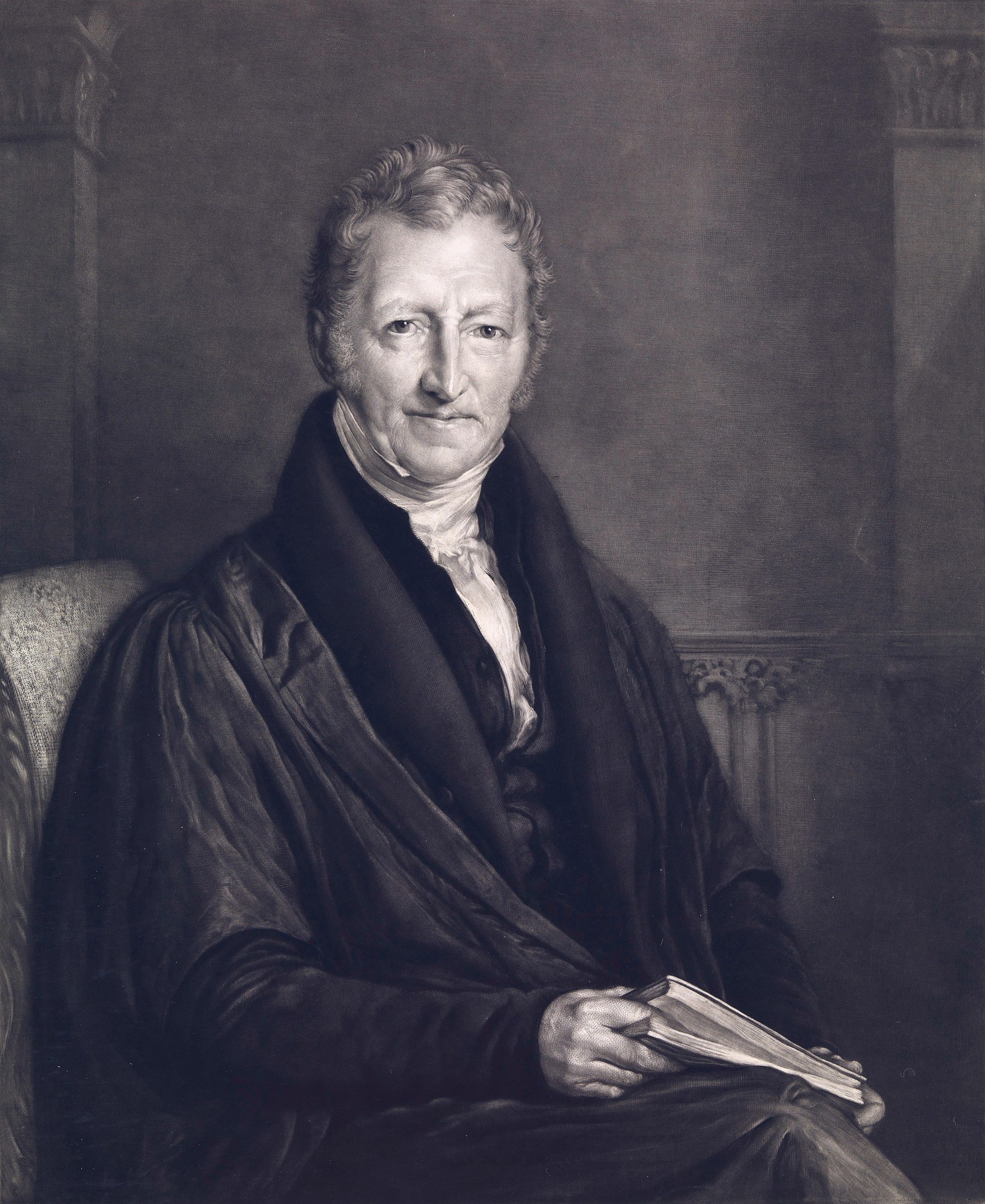
Malthus’s theory
At the very beginning of the modern age, an English economist named Thomas Robert Malthus (1766-1834) published a short book called An Essay on the Principle of Population. Malthus’s theory became instantly controversial on both sides of the Atlantic. In simplest terms, he indicated that the population grows as long as there is food and water to support it, and when these resources run out, the population is brought back down through famine, disease, and war. These three causes of depopulation are often termed “Malthusian disasters.”

Figure 22.2.2: The Malthusian catastrophe simplistically illustrated
Malthus went on to observe that
- populations tend to increase geometrically (two people become four, four become eight, eight become sixteen, etc. )
- food supplies at best increase only arithmetically (two bushels of wheat become four, which become six, which become eight)
According to theorists, society can easily outrun its ability to feed itself if the population is not kept down by reducing births or increasing deaths. This idea also explains why early modern Europeans were so obsessed with acquiring new territories to improve their food production abilities.
Today, population scientists agree that as economic security increases, a “demographic shift” occurs and birth rates decline. In other words, if the poor have enough to eat, infant mortality rates and people’s fear of starving in their old age decrease. Death rates of children decline and parents have fewer children. In the developed world, family sizes decreased from an average of six children per family in the early 19th Century to 1.6 in the 20th Century. Many developed nations now face decreased growth or even shrinkage in their native populations.
According to Malthusian theory, food production was to increase much more slowly than population. The Green Revolution proved this theory wrong to some degree. In addition, contemporary biologist Justus von Liebig popularized Liebig’s Law, which states that growth is dictated not by the total resources available, but by the scarcest resource or limiting factor. So the question is, will we be able to keep outrunning Malthus forever, or will a limiting factor end our exponential growth?
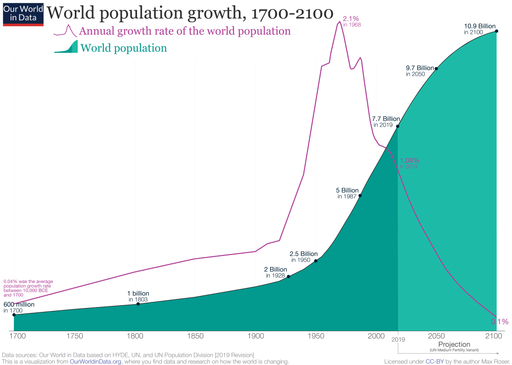
Figure 22.2.3: World population (green shaded area) and world population growth rate (red line) for the period: 1700 - 2100 based on data from the UN Population Division, 2019 revision Full screen version is available at Wikipedia.
Peak Oil
Marion King Hubbert was an American geophysicist, who created the Peak Oil theory, which correctly predicted that oil production in the continental US would peak between 1965 and 1970, and then begin to decline. He further suggested that world oil production would peak “in about fifty years.” Although the data and especially its interpretation are very controversial, several credible sources suggest that the peak in world production happened between 2003 and 2004, right on Hubbert’s schedule.
Petrochemical prices can be expected to rise as supplies diminish. New technologies, such as fracking and converting tar sands, have added some new sources to the supply. However, these new additions do not refute the logic of Hubbert’s predictions. Rather, they potentially push back the timing of the supply crunch that will cause oil prices to rise. Industrial production and food supplies depend heavily on the price of energy. Thus, a reduction in the supply of oil, an increase in its cost, or an increase in pollution could all negatively impact our world.
Some have argued that possible future discoveries of more oil could postpone society’s shift to a non-fossil fuel energy economy. But, for the most part, even the oil industry agrees that production will decline. So the question we are left with is, how quickly will we use up what remains? And, given what we have learned in the last decade about the effect of burning fossil fuels on the global climate, should we?
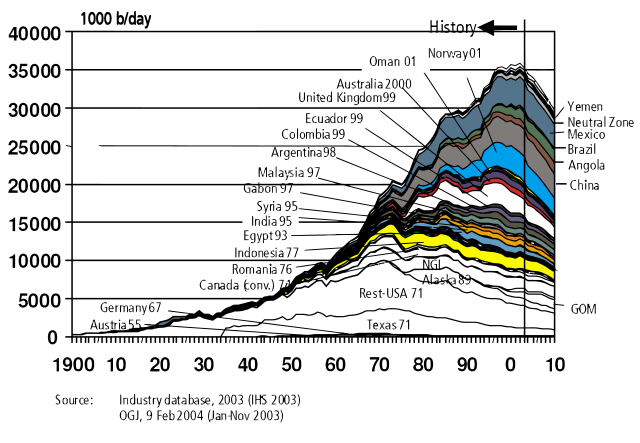
Figure 22.2.4: 2004 U.S. government predictions for oil production other than in OPEC and the former Soviet Union using Hubbert's theory. Full screen version can be found on Wikipedia.
Carbon Emissions
Some climate activists suggest that for the sake of the environment, we ought to switch from fossil fuels to other energy sources. According to this argument, burning oil (and coal) reserves are the biggest contributors to atmospheric carbon that leads to global warming. While this is true, other factors such as deforestation and even agribusiness release comparable amounts of carbon. Stopping the use of oil will not solve the whole climate change problem, although it may help stabilize the global climate.
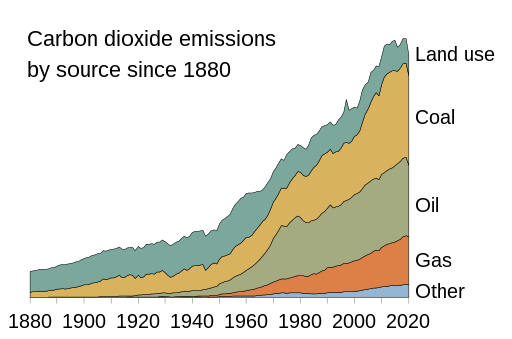
Figure 22.2.5: Carbon dioxide emissions by source since 1880 as calculated for the 2020 Global Carbon Budget. Carbon dioxide generated by land use changes (deforestation) has been added to as coal, oil, and natural gas consumption have each ramped up in turn.
Energy is such a large part of the economies of developed nations. Thus, any changes can be highly controversial. Global energy corporations have an incredible ability to influence politics. In 2017, BP (British Petroleum operating in 72 countries) issued an “Energy Outlook” report for the year 2035. BP claimed that Hubbert’s Peak Oil scenario was actually incorrect, and suggested that the word 'oil' needs to include tar sands and biofuels such as ethanol. Ethanol production depends not only on the energy-intensive production of surplus corn and cane sugar (used in Brazil as the primary plant source), but on government subsidies that keep the prices of these commodities below their cost of production. So it’s hard to see how biofuels could legitimately be called a new source of “oil.”
Climate change, more than any other environmental concern, has dominated the attention of the world community. The idea that the planet’s climate has been adversely affected by human activity is very controversial in the media, politics, and popular culture. According to the U.S. National Aeronautics and Space Administration (NASA), at least 97% of climate scientists agree that global warming over the past couple of centuries is due to human activities. American and international science organizations like the American Geophysical Union, the American Meteorological Society, and the American Medical Association, in addition to the Intergovernmental Panel on Climate Change, agree that we must reduce emissions of greenhouse gases beginning now.
%252C_variwide_chart.png?revision=1)
Figure 22.2.6: Per capita carbon emissions by country. Height = per capita emission; width = size of population. Color = rate of change.
Climate Change
Climate science is complicated and it can be difficult for some people to understand. Some people believe that science seems to contradict their most cherished religious doctrines about the nature of the world and their place in it. Sometimes climate change has been identified with a particular political orientation. The claim that only liberals care about the environment is not true, and ignores the traditional meaning of the word conservative. In reality, this is not a liberal vs. conservative issue. In addition, political action committees and foundations represent corporations that oppose changes in fossil fuel energy policy. Thus, it is difficult to find a solution that all will support.

Figure. 22.2.7 Pie-chart representations of scientific consensus among publishing climatologists on human-caused global warming, based on data collected by Cook et al., "Consensus on Consensus" (2016) (Wikipedia)
In 2016, Pew Research surveyed a group of people living in the United States. Roughly half of adults (48%) said climate change is mostly due to human activity. Two-thirds (67%) of U.S. adults indicated that climate scientists should have a major role in policy decisions about climate issues. They also found wide differences among political party and ideology groups on whether or not human activity is responsible for warming temperatures. Indeed, the U.S. Supreme Court decided in the Citizens United v. Federal Election Commission (2008) case that corporations could hide their political spending on opposing climate change theories.
A 2014 study found that conservative think tanks funded by energy corporations play a central role in “denying the reality and significance of anthropogenic global warming (AGW).” These tanks sponsored the publication of 108 books denying climate change through 2010. Some U.S.-based think tanks have also funded anti-global warming books, pamphlets, and videos in foreign countries.
The same study examined the credentials of the authors and editors of these climate change denial books and found that “an increasing portion of denial books are produced by individuals with no scientific training. It appears that at least 90% of denial books do not undergo peer review, allowing authors or editors to recycle scientifically unfounded claims that are then amplified by the conservative movement, media, and political elites.”
 Figure 22.2.8: Global surface temperature reconstruction over the last millennia using proxy data from tree rings, corals, and ice cores in blue. Observational data is from 1880 to 2019.
Figure 22.2.8: Global surface temperature reconstruction over the last millennia using proxy data from tree rings, corals, and ice cores in blue. Observational data is from 1880 to 2019.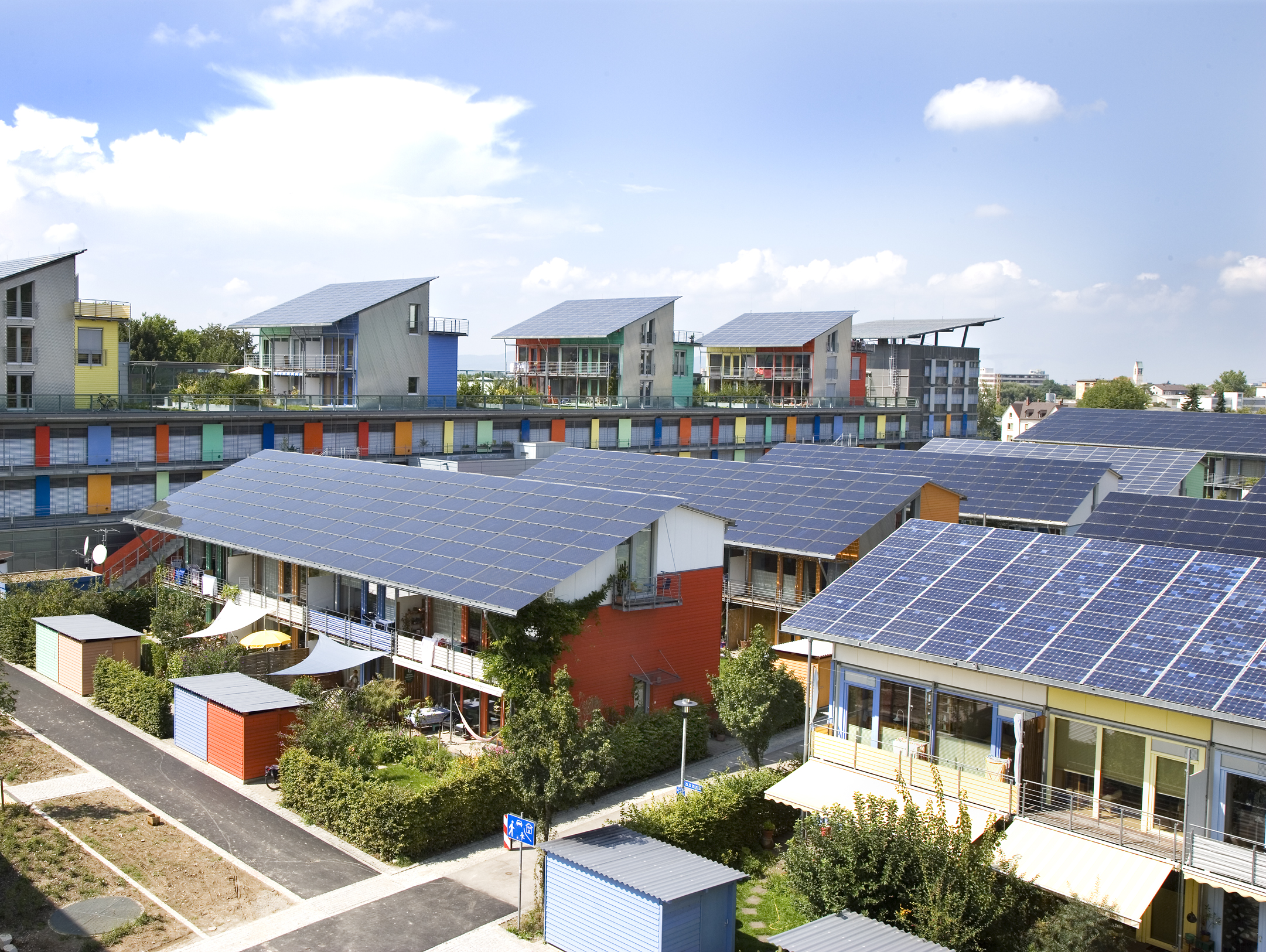
The ongoing controversy is unfortunate. But, there are some positive notes.
- Germany is becoming a world leader in solar energy deployment, in spite of receiving only as much sunlight as the U.S. state of Alaska
- Britain is mapping its shift to a post-oil based economy with its “transition towns”
Most economists agree that there are currently more jobs in the renewable energy sector than in the fossil fuel sector, and that trend is going to increase. Economists argue that the overall economy would be better off, if we shifted to sustainable energy sources and reduced carbon emissions. Of course, the global petroleum industry would be negatively affected by the transition.
Of nearly 14,000 peer-reviewed climate articles published between 1991 and 2012, only 24 reject global warming. There really isn’t any doubt that the Earth’s climate is changing in ways that are going to cause serious social disruption in the future.

